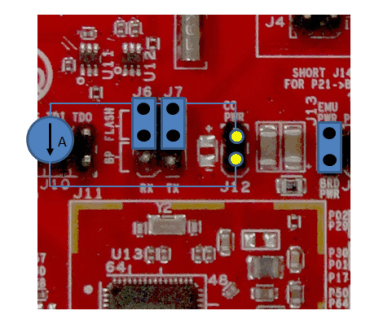SWRU372C June 2014 – March 2020 CC3200
- CC3200 SimpleLink™ Wi-Fi® and Internet of Things Solution With MCU LaunchPad™ Hardware
- Revision History
2.6.2 Measuring Active Power
Figure 12. Measuring Active Power

- Remove the 3V3 jumper (J12).
- Solder a 0.1-Ω resistor on the board at R62. Or, attach a jumper wire between J12 so that it can be used with a current probe.
- Measure the voltage across the R62 using an oscilloscope with a differential probe. (For the current probe, coil the wire around the sensor multiple times for good sensitivity).
- An ammeter can also be used for this measurement, but the results may be erroneous due to the switching nature of the current.